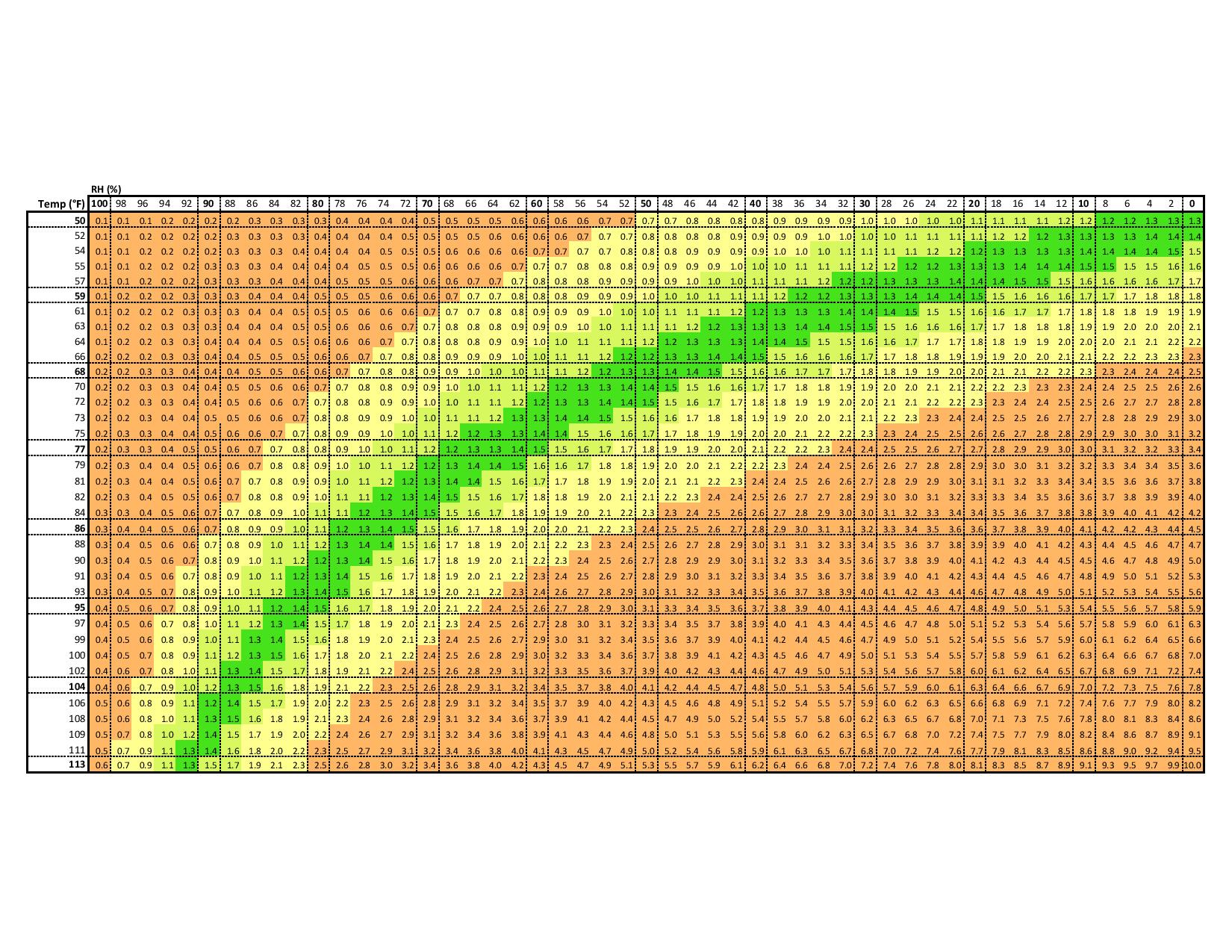Any indoor cannabis grower knows only the perfect growing environment will yield maximum growth. Finding the right balance between temperature and humidity plays a critical role not only in the quantity of the plant yield but also the quality.
So, what does it take to achieve the optimal grow room conditions? It means finding the VPD “sweet spot.” Vapor Pressure Deficit (VPD) is a measurement of the air’s ability to accept additional moisture. As humidity levels rise, the air becomes increasingly saturated, which reduces the plant’s ability to transpire. In the ideal growing environment, the room’s temperature and humidity conditions should be set within a target range to maintain the appropriate VPD. Depending on the exact strain and the cultivator’s desired results, target VPD range may vary.
Understanding VPD and the importance of transpiration–the process that affects the plant’s ability to move nutrient-rich water throughout the plant–is essential. But how much do you actually know about transpiration? Let’s use a simple analogy to shed some light.
It’s actually the heat and humidity.
Ever hear the phrase “it’s not the heat, it’s the humidity”? As humans, we need to sweat to cool off, but the humidity around us affects that. The key is to find that sweet spot in order to stay cool, hydrated, and healthy. This is true for plants too. Plants go through a process called transpiration where the water and nutrients in the soil travel up through the roots and out through the leaves. Plants need to expel excess water from small pores called stomata in order to grow properly. If a plant tries to “sweat,” but the air around it already has too much water vapor in it, the plant will become oversaturated, which can lead to mold, mildew, and pests. If a plant transpires through those same pores, but its environment is too dry, it will over-transpire, releasing more moisture than it can replace.
Digging Deeper.
Now that we’ve taken a look at the transpiration process, the next step is to evaluate your growing atmosphere and determine whether it will yield healthy, quality cannabis by calculating your VPD.
A good rule of thumb – if your VPD is too low, the humidity levels in your ambient air are too high to efficiently support transpiration. This means the plant cannot release moisture fast enough. This restricts the plant’s ability to uptake additional moisture and nutrients through its root system and will suppress plant growth. If your Vapor Pressure Deficit is too high, it means that your ambient air is so dry that the plants transpire too rapidly. This will result in overdrying and stressing of the plants. By managing VPD, you can manage the rate at which the plants transpire and, in turn, control the metabolic rate of the plants. VPD targets will vary based on the stage of grow and the level of maturity of the plant’s root system.
This is where the question of achieving the coveted VPD sweet spot comes in. In simple terms, VPD is calculated using temperatures and humidity. More specifically, you have to find the SVP and AVP. Let’s break it down.
SVP stands for Saturation Vapor Pressure
Since air can only hold a certain amount of vapor before it would turn back into liquid water, there is a maximum amount for each temperature. This is the point at which RH is 100% and VPD is 0.
So, SVP is the maximum water vapor that the air can contain, and it varies depending on the temperature of the air—warmer air can contain far more moisture without becoming saturated.
The hotter the air, the higher the SVP, meaning it can hold more vapor.
AVP stands for Actual Vapor Pressure
This is the actual amount of water vapor in the air at any given point in time. The AVP can only be as high as the current SVP, so if it reaches that, any additional water vapor will turn into liquid in the form of precipitation, dew, etc.
Tying these two measurements together is Relative Humidity (RH), which refers to the proportion or comparison of water in the air versus its maximum, and it is expressed as a percentage. If the AVP is equal to the SVP, the RH would be equal to 100%. If you want to think of this concept as an equation, it would look like this: RH= (AIRAVP / AIRSVP) x 100
Sound complicated? No fear. There are VPD calculators available online if you want to plug in your numbers and find your exact VPD, otherwise known as the sweet spot.
One important thing to note about the concept of VPD is that while there is technically a “sweet spot” for VPD, it’s somewhat relative because you can find a different sweet spot for each possible leaf and air temperature. That may sound confusing, but it’s really quite simple. Think of it this way: a plant performing at 60 degrees with a 65% RH will have a similar, if not equal, VPD as one in 65 degrees and 70% RH. Each stage of the grow cycle also has its own ideal VPD level. If you’re curious about specifics, there are VPD charts that can help you determine your sweet spot depending on your specific data points and growing stages.

Built for Grow – the right equipment.
When it comes to growing, we never cut corners, and neither should you. To keep you on track, Anden’s dehumidifiers, humidifiers, and precision control products are intuitively designed and built for grow. They can keep temperature, humidity, and air circulation at the ideal levels, so you won’t have to worry about your plants day or night. Check out our products and maximize your yield with greater control.
Know more. Grow more.
Have a question? Need help getting started? Give us a call at 1-800-972-3710 or drop us a line.
